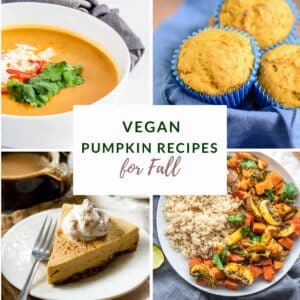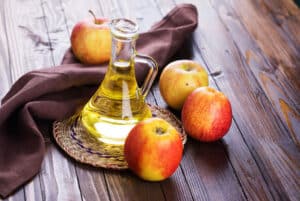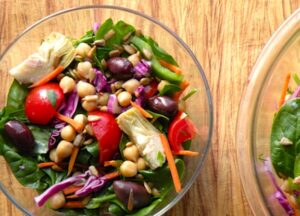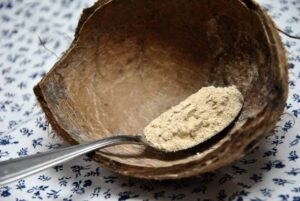Celiac disease (also called celiac sprue, non tropical sprue, and gluten-sensitive enteropathy) is genetic. All individuals who develop celiac are born with a genetic predisposition for the disease, but the age of onset can vary from infancy to old age. Some people are diagnosed at birth or during childhood, bit in many people, the disease lies dormant until it is triggered later in life.
No one knows exactly what causes celiac disease to become active, but experts believe that times of extreme emotional or physical stress—including surgery, a viral infection, pregnancy, or childbirth—can set the stage. Researchers are also beginning to explore whether changes in the types of bacteria living in your gut may be the spark that initiates adult-onset celiac.
It’s important to remember that celiac disease is not a food allergy. Some people call it an allergy as a shorthand way to explain why those with a diagnosis need to avoid certain foods, but that description is both misleading and dangerous. Celiac disease is an autoimmune disorder, a category of diseases in which the body’s immune system attacks itself. The immune system reacts to a protein called gluten, which is found in wheat, and related proteins found in rye and barley.
When even the smallest amount of gluten enters the digestive system, it sets in motion a cascade of inflammatory processes. The immune system begins to attack the body’s own tissue, resulting in damage to the small intestine, which is not merely a smooth tube connecting the stomach to the colon. The inner lining of the small intestine is jam-packed with protruding ridges called villi, which absorb nutrients as food passes through.
Celiac disease causes inflammation that damages and sometimes destroys the villi, which means they can’t do their job, and the nutrients your body needs pass through your digestive system unabsorbed and are eliminated in waste. The outcome of this damage varies depending on the extent of the disease. In mild cases, there are no overt symptoms, but blood tests might reveal a deficiency in certain nutrients, especially folate, vitamin B12, or iron (which can result in anemia).
Over time, poor calcium and vitamin D absorption can lead to osteoporosis. In some people, celiac disease causes embarrassing and sometimes life-altering gastrointestinal systems, including gas, bloating, diarrhea or constipation, and weight-loss. Other problems associated with celiac disease include nerve damage, migraines, seizures, infertility or miscarriages, joint pain, and even some cancers, including non-Hodgkin lymphoma and cancer of the esophagus or small intestine. The longer celiac goes untreated, the greater the risk of harm.
How food affects Celiac disease
There is no cure for celiac disease, and at present, the only treatment is to eliminate gluten from your diet. If you follow a gluten-free diet strictly, your villi will eventually heal, and, with the right foods, you can replenish stores of nutrients you’ve been missing. In terms of limiting damage, nutritional treatment for celiac disease is all about which foods to avoid. However, because the list of forbidden foods is so extensive, it is also critically important that you pay attention to the vitamins and minerals that most people normally get from gluten-containing foods and be sure your diet is rich in other sources.
Avoiding foods the contain gluten
If you have an allergy to cars or you know people who do, you’ve probably noticed that not every cat allergy sufferer suffers in the same way. Some people start to sneeze if they are just in the same house with a cat, while others remain sneeze free until they bury their face in the animal’s fur. That’s not the case with celiac disease. Even the tiniest bit of gluten—the amount found in ⅛ teaspoon of wheat flour—can signal the body’s immune system to respond with a full attack. The tricky part of celiac disease is that damage can occur without you noticing much in the way of symptoms. But the longer you eat foods containing gluten, the further the damage will progress until eventually, you become noticeably sick.
I wish the guidelines for avoiding gluten were as easy as telling you to stop eating wheat, barley, and rye flour. That’s part of what you need to do, but it is much more complicated than that. There are many hidden sources of gluten, and beyond that, some naturally gluten-free products can be contaminated with gluten.
Common foods that contain gluten
- Barley (and anything with the word barley in it,
such as barely malt) - Beer (all types)
- Bleached flour
- Blue Cheese (sometimes made with bread mold)
- Bran (also called wheat bran)
- Bread flour
- Bulgur
- Cake flour
- Communion wafers
- Couscous
- Cracker meal
- Croutons
- Durum
- Farina
- Farro
- Flour (this usually means wheat flour)
- Gluten, glutenin
- Graham flour
- Groats
- Kamut
- Malt (and anything with the word malt in it, such as,
rice malt, malt extract, or malt flavoring) - Malt beverages
- Matzo
- Oats and oat bran
- Orzo
- Pasta (all varieties made with wheat, wheat starch,
oats, barley, rye, or any ingredient on this list) - Rye (and anything with the word rye in it)
- Seitan
- Semolina
- Soy sauce (check ingredients—it’s often made with wheat)
- Spelt
- Suet
- Tabbouleh [if made from bulgur or cracked wheat]
- Teriyaki sauce
- Triticale
- Triticum
- Unbleached flour
- Vital gluten
- Wheat (and anything with the word wheat in it, such as wheat grass,
wheat berries, wheat germ, wheat starch; buckwheat is okay and is the only exception)
This article is excerpted by permission from Joy Bauer's Food Cures: Eat Right to Get Healthier, Look Younger, and Add Years to Your Life*. As the nutrition and health expert for The TODAY Show, Joy Bauer shares reliable, practical, and straightforward advice that helps millions of Americans eat better and lead healthier, more fulfilling lives. Read more about Joy and her work on JoyBauer.com.
- For more tips on plant-based nutrition, make sure to browse VegKitchen’s Nutrition page.
- For lots more features on healthy lifestyle, please explore VegKitchen’s Healthy Vegan Kitchen page.
*This post contains affiliate links. If the product is purchased by linking through this review, VegKitchen receives a modest commission, which helps maintain our site and helps it to continue growing!






jamie hayworth-chin says
Thanks so much for this post. I have a question regarding tabbouleh. You listed tabbouleh as a food to avoid for celiacs. I make my own tabbouleh and eat it often for lunch. I use parsley, tomatoes, cucumbers, and lemon juice. With these basic ingredients would it still be an irritant?
Thanks,
Jamie
Nava says
Hi Jamie-- this article is by Joy Bauer, nutrition editor on CBS. I'm glad you enjoyed it. I'm confident that she is referring to the kind of traditional tabbouleh that's made from bulgur (cracked wheat). The way you make it is surely safe. I'm pretty sure that making it with quinoa would be fine as well.
jim says
how does this explain the affects of me being a vegan and having celiac diease please explain ...